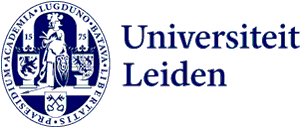
Robert Smit receives his PhD with distinction. ‘I am happy to be back in the lab’
An all-optical transistor, a molecule-sized sensor and a new kind of single-photon source for quantum communication. All dreamed applications of fundamental physics that are one step closer thanks to Robert Smit. On 12 June, he defended his PhD thesis with distinction.
Smit did his PhD research in Michel Orrit’s group, where researchers uncover a world of physics using single molecules. ‘You could say I actually worked on three different projects,’ the PhD candidate says with a smile. ‘You get to learn new things each time as a researcher, it almost feels like a hobby.’

Extremely fast ánd energy-efficient transistors
There are billions of transistors in your smartphone alone. These little switches let energy through or block it. If we could make them even more efficient, it would have a major impact. ‘We are not that far yet, but Michel has been working for 15 years on the dream of making an all-optical transistor,’ Smit says. ‘Which would be extremely fast and energy-efficient.’
To do this, Smit brought a molecule into a specific energy state, a so-called triplet state. When it falls back to the ground state, a very small amount of energy is released by an emitted photon. ‘This is called phosphorescence and is exactly what I wanted to detect. In the process, the molecule emits very weak light over a somewhat longer period of time. A bit like glow-in-the-dark stars in many children’s rooms. To measure that signal, I had to block all ambient light, so my setup was completely shielded with cloths. Finding that phosphorescence was a really cool moment in my PhD.’
Still, a lot of work is needed. ‘We still need to get the molecule into the triplet state in a more efficient way. Moreover, we currently cool the whole thing down to four degrees Kelvin, not very convenient for everyday technologies.’
A miniscule sensor and single-photon source
‘In my second project, I made a microsensor in which a single molecule can detect an electric field,’ the researcher explains. ‘This is possible because the spectrum of a molecule with a bit of positive charge on one side and negative on the other (a dipole) shifts in an electric field. With this sensor, you can measure changes in the electric field on a much smaller scale than with existing sensors, really at the molecular level. Who knows, maybe that could one day be applied to make photovoltaic cells from solar panels more efficient.’
For his third project, Smit experimented with placing a molecule on a 2D material, such as graphene. ‘If you heat that up slightly, it turns out you get a source of single photons that are indistinguishable from each other. Such photons are important for research into quantum communications and networks, for example.’

Back to research after a foray into business
His supervisor Orrit is very appreciative of his work. ‘Robert is a very mature and independent researcher, who has designed and performed his experiments largely alone. My interaction with him was more of a discussion with a colleague than the supervision of a run-of-the-mill promovendus. I look back to our collaboration with much pleasure.’ Smit did not expect the distinction. ‘That was really the icing on the cake. I have worked in the financial sector for a while after my master’s degree. That was ultimately not as innovative and challenging as research for me,’ Smit reflects on his career. ‘I am happy to be back in the lab. I can fully express my curiosity in this.’
